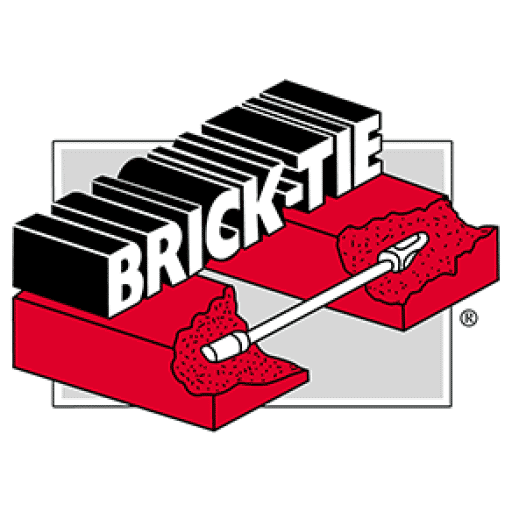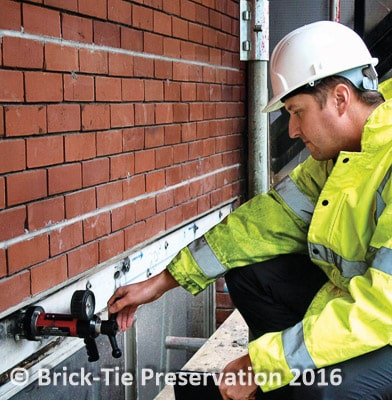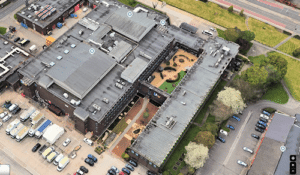Brick-Tie specialise in expansion joint repair and expansion joint installation.
One area of growing concern is cracking caused by thermal movement. All building materials expand and contract when they heat up and cool down. In older stone housing this was rarely an issue; lime bed joints are soft and accommodate these movements easily, over a wide area of wall.
Modern buildings, particularly new and those built after the war are much more prone to damage due to this thermal movement.
Cracks in bricks, blocks and render are common and unfortunately it is being discovered more frequently.
Whilst thermal movements in themselves are quite small, they can lead to very wide and serious cracking.

This is due to the cyclical nature of the movement;
When a wall expands it is able to absorb the loads imposed by the expansion, because masonry is very strong in compression. Imagine the bricks at the very bottom of a tall brick chimney; they don’t get squashed flat by the weight above, because they have a high ‘compressive strength’.
However, masonry is very weak in tension; it’s easy to lift the top course of brick from the chimney, with maybe just a tap of a hammer to break the adhesive bond, between the brick and the bed-joint, before lifting it up with minimal effort. This is the relative difference in the compressive and tensile strength of masonry – it’s huge.
So this means that the compression cause by the expansion is accommodated….
Then the wall stabilises and starts to cool and shrink.
This shrinkage sets up tensile forces in the masonry and it fails at the weakest point or at the point of restraint.
Imagine you are gently pulling a damp tissue along a work-surface; your partner then places a finger on it and it tears… between the finger and the part you are pulling on…
Thus cracks are usually vertical and often either at a weak point, above or below windows, or at the point of restraint; near a return/corner.
Initially these are small cracks, but then something takes over to cause the problem to get much worse…
Our wall is now cool and stable, albeit with a slight vertical crack in it. Time passes, buses drive by, the wind blows and naturally the crack accumulates a bit of dust and debris, due to the vibration. This debris is mainly masonry particles and thus has high compressive strength.
After a cool night our wall warms up again and once more the expansion forces are absorbed, even at the crack position, which is held open by the debris.. It cannot close.
Back to cooling again and the wall shrinks… it already has a ready-made expansion joint and the crack widens slightly….. More debris gets in and we start again.
This is why even the slight thermal movements in a building can eventually lead to major cracking and disfigurement of the building. The phenomenon is known at ‘ratcheting’. In the same way a ratchet can shift a huge load via tiny increments, so can a thermal crack lead to similar orders off magnitude.
There is a cure though…
A structural appraisal and specification of an expansion joint installation or expansion joint repair in the correct place, allows the movements to occur at the new joint, whilst the joint remains free of debris and never needs to get any bigger than a ‘one-night’ expansion demands.
Remedial expansion joints in buildings are usually 16mm to 18mm wide, filled with proprietary joint filler and tied using Helifix’s remarkable slip-tie system, which provides wall tie continuity at the joint position, whilst allowing the masonry to move slightly; avoiding the ‘resistance’ I mentioned earlier. Care is needed, with specification and application, so trained and experienced specialist contractors should do this.
Over the past 26 years we’ve specified and installed very many expansion joints in houses, office blocks, retaining walls and commercial factories, including a multi-million pound waste processing plant in Leeds. Recent completed contracts include four blocks of 9 year old houses in Beeston Leeds, A four storey office block in the centre of Leeds and a 70’s built four storey apartment block in Headingley
Call Bryan, Mike or Paul for technical advice or to book a site evaluation, survey or technical presentation for CPD purposes.






